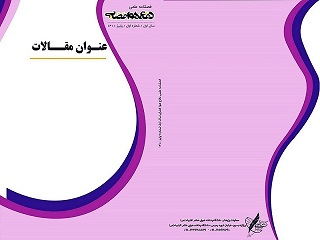نوع مقاله : مقاله پژوهشی
نویسندگان
1 دانشجو دکتری، دانشکده مهندسی هوافضا دانشگاه تهران
2 عضو هیات علمی، گروه هوافضا، دانشکده مهندسی مکانیک دانشگاه تربیت مدرس
چکیده
عملکرد موتورهای هواپیمای تنفس طبیعی با افزایش ارتفاع به دلیل کاهش فشار و چگالی هوا به طور قابل توجهی افت میکند که بر توان، گشتاور، فشار درون سیلندر و دمای احتراق تأثیر میگذارد. این مطالعه یک تحلیل تطبیقی از نسخههای کاربراتوری (Rotax 912 ULS) و انژکتور سوخت (Rotax 912iS) موتور روتکس ۹۱۲ را با استفاده از شبیهسازیهای GT-SUITE در ارتفاعات تا ۹,۱۵۰ متر ارائه میدهد. نتایج نشان میدهد که موتور کاربراتوری به دلیل ترکیب ثابت سوخت و هوا، در ارتفاعات بالا تا ۸۰٪ کاهش توان را تجربه میکند، در حالی که موتور انژکتور سوخت با تنظیم پویا و لحظهای میزان سوخت، عملکرد پایدارتری را حفظ میکند. همچنین سیستم انژکتور سوخت (EFI) فشار درون سیلندر و پایداری احتراق را در شرایط کمبود اکسیژن بهتر حفظ میکند. اگرچه انژکتور سوخت کاهش عملکرد را مؤثرتر از کاربراتور کاهش میدهد، هر دو پیکربندی در ارتفاعات بالا افت قابل توجهی را نشان میدهند که محدودیتهای ذاتی موتورهای تنفس طبیعی را برجسته میکند. این یافتهها بر اهمیت روشهای پیشرفته جبران ارتفاع - مانند توربوشارژر یا نقشهبرداری بهینه انژکتور سوخت (EFI) - برای افزایش قابلیت اطمینان و کارایی در عملیات پروازی در ارتفاعات بالا تأکید میکند.
کلیدواژهها
عنوان مقاله [English]
Comparative Analysis of Carbureted and Fuel-Injected Rotax 912 Engine Performance in High-Altitude Flight Conditions
نویسندگان [English]
- Seyed Ali Salari 1
- Fathollah Ommi 2
1 PhD Candidate, Faculty of Mechanical Engineering Department, Sharif University of Technology.
2 Faculty of Aerospace Group, Mechanical Engineering Department, Tarbiat Modares University.
چکیده [English]
The performance of naturally aspirated aircraft engines declines significantly with increasing altitude due to reduced air pressure and density, affecting power, torque, in-cylinder pressure, and combustion temperature. This study presents a comparative analysis of the carbureted (Rotax 912 ULS) and fuel-injected (Rotax 912iS) versions of the Rotax 912 engine using GT-SUITE simulations across altitudes up to 9,150 meters. Results indicate that the carbureted engine suffers an 80% reduction in power at high altitudes due to its fixed fuel-air mixture, while the fuel-injected engine maintains more stable performance by dynamically adjusting fuel delivery. The EFI system also preserves higher in-cylinder pressure and combustion stability under oxygen-scarce conditions. Although EFI mitigates performance loss more effectively than carburetion, both configurations exhibit significant degradation at high altitudes, highlighting the inherent limitations of naturally aspirated engines. These findings underscore the importance of advanced altitude compensation methods—such as turbocharging or optimized EFI mapping—for enhancing reliability and efficiency in high-altitude aviation operations.
کلیدواژهها [English]
- Aircraft engines
- Rotax 912
- Fuel injection
- Altitude effects
- GT-SUITE simulation
- Internal combustion

